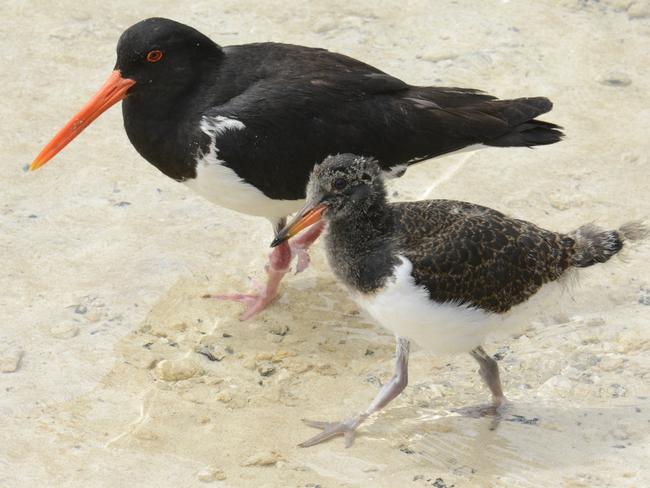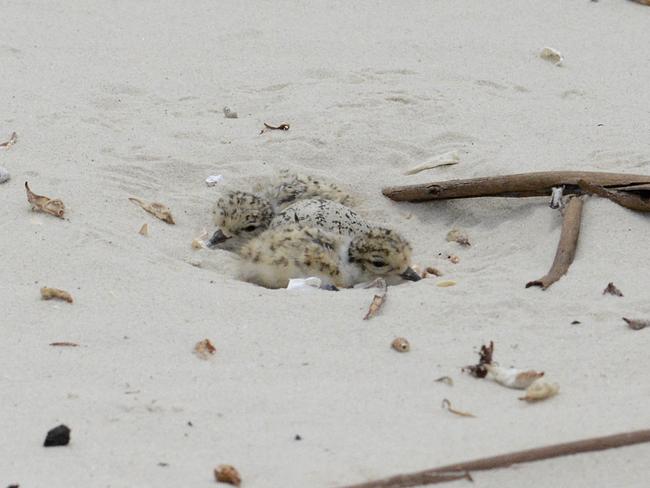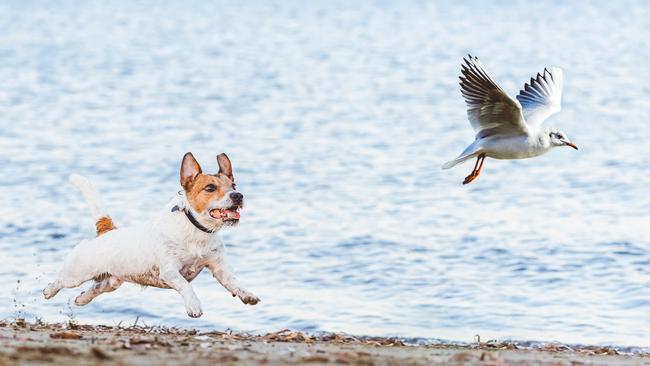Talking Point: Your favourite beach is a dying species’ home
ERIC WOEHLER: When you’re enjoying our famous beaches, remember precious shorebirds are fast losing their homes

Opinion
Don't miss out on the headlines from Opinion. Followed categories will be added to My News.
TASMANIA’s beaches attract thousands of human visitors daily during the warmer months.
Most people who have visited a sandy beach in Tasmania would be familiar with the tiny hooded plover, with its rapid clockwork running along the beach, or the larger, more conspicuous pied oystercatcher with its striking black and white plumage and bright red bill and legs.
Perhaps fewer people will be familiar with the pied’s close relative, the all-black sooty oystercatchers that join the pied oystercatchers on beaches to see out the winter months.
Hooded plovers and pied oystercatchers nest on the beach sands — they construct their cupped nest on the surface of the beach and lay two or three eggs. A month later the eggs hatch and the chicks will need to survive another month or longer until they can fly.
Joining these two species at just a very few beaches around Tasmania are fairy terns, small silver and grey seabirds half the size of the familiar silver gull, who also nest on the beach and whose eggs would fit in a teaspoon.
Behind the beaches, nesting under vegetation or in small rocky cavities are little penguins, familiar to all Australians.
However, human visitors are threatening nationally and internationally significant breeding populations of beach-nesting shorebirds and seabirds.

Analyses of long-term survey data collected since the mid-1990s have uncovered a previously unknown but highly critical role that Tasmania’s beaches and coastal margins play in the conservation of beach-nesting birds globally. These analyses show Tasmania supports half of the world’s populations of the eastern hooded plover, and of pied and sooty oystercatchers. Tasmania also supports up to 10 per cent of the world population of fairy terns, and about half the world’s population of the little penguin.
Hooded plovers and fairy terns are formally listed threatened species in recognition of the potential for the species to slide to extinction.
These populations are of national and international significance, and Tasmania already acts as the global refuge for them.
The two primary reasons for this are simple — first, Tasmania’s coast is convoluted and longer than those of Victoria and NSW combined. Despite its small size, Tasmania’s coastline provides plenty of breeding and feeding habitats for the birds.
Second, as human populations and pressures on the Australian mainland increase — especially in coastal margins — mainland populations of beach-nesting birds are disappearing, and so Tasmania’s prominence as global refuge for Australia’s beach-nesting birds is increasing by the day.

With 20 million Australians living within 100km of the coast, the beach is deeply embedded in Australian culture. Australians see the beach as a resource — a case of “what can we do at the beach?” not recognising it is critical habitat for a number of beach-nesting birds.
The recent spate of dog attacks on penguins around the state have highlighted the vulnerability of penguins when they are ashore. But the other beach-nesting species are at greater risk from the double threat of human disturbance and dog predation.
A number of coastal communities around Tasmania have voluntarily taken on the role to protect nesting sites for these species, erecting fences to protect nesting sites.
Often the fences provide a sufficient deterrent, keeping people away from nests, and the chicks survive.
Unfortunately, at some locations, the fences are destroyed by people who believe the entire beach is there for their use, irrespective of the needs of the threatened species of birds nesting inside the fences.
The shorebirds are present on the beaches year-round, and cannot exist anywhere else — take away the beach and they will be unable to breed, feed or survive. Pied oystercatchers can live for more than 30 years, and hooded plovers up to 15. Imagine the changes the birds have seen to the coasts in their lifetimes!
Our attitude towards the coasts must change if these species are to survive into the future. The birds are losing the coast — their breeding and feeding habitats, and every visitor to Tasmania’s beaches should welcome the opportunity to see these birds when they have disappeared from so many other areas in Australia. Visitors should acknowledge the birds need their space, and if a community group has made the effort to protect “their” nesting birds, please respect the fencing. Many beaches have dog restrictions in place to protect sensitive nesting habitat. If restrictions are present, please accept these minor inconveniences essential to ensure the survival of our coastal birds. If we lose these species from Tasmania, they will be lost to the world — an outcome unacceptable to most Australians.
Dr Eric J. Woehler is convenor of BirdLife Tasmania.


